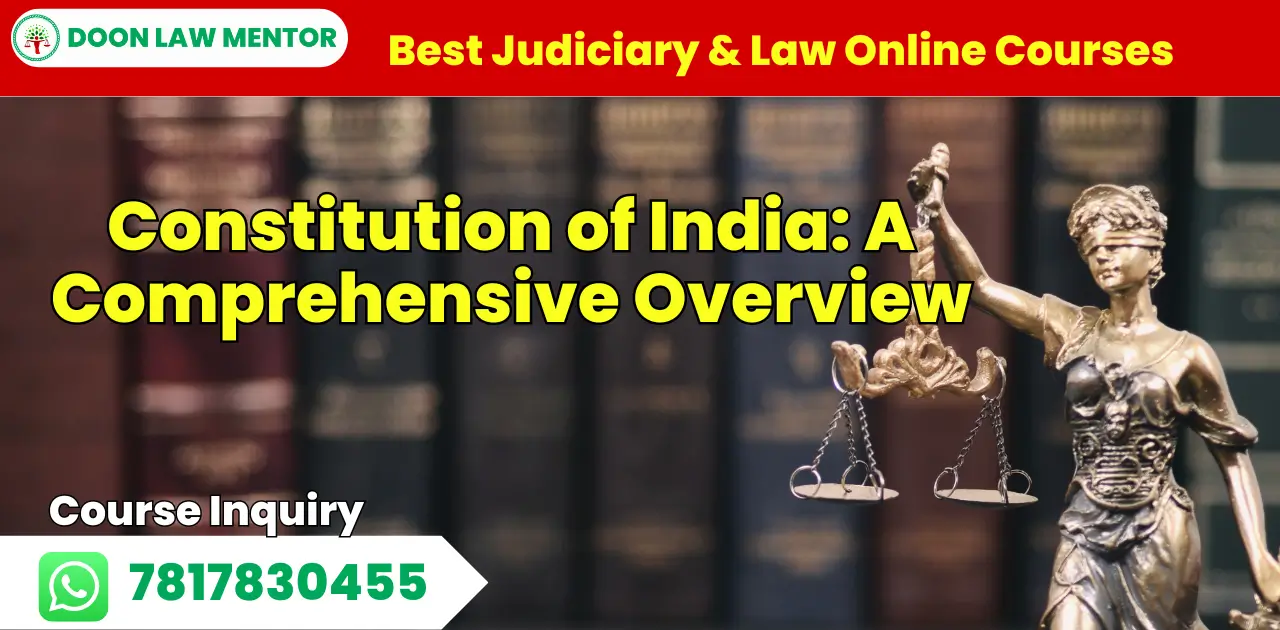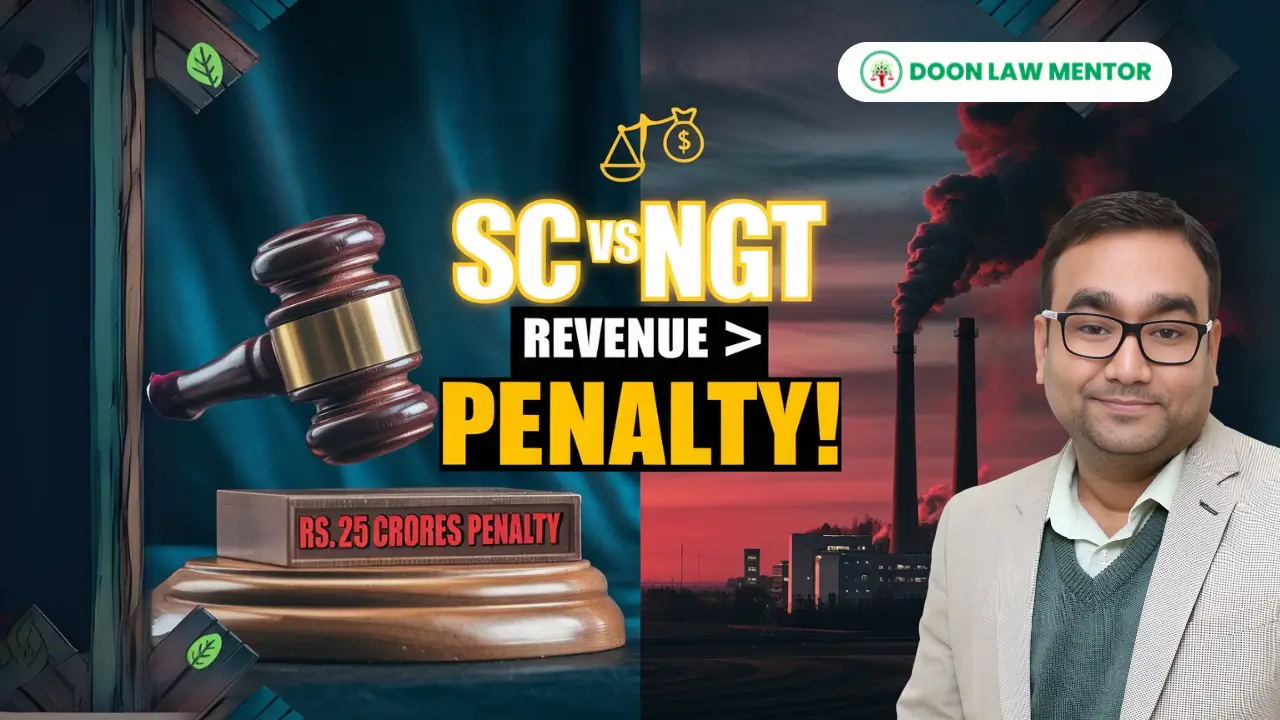Constitution of India is not just a legal document; it is the cornerstone of Indian democracy and governance. As the supreme law of the land, it lays down the framework for political principles, establishes the structure and powers of government institutions, and guarantees fundamental rights to its citizens. Understanding the Constitution is crucial for anyone interested in the legal, political, or social spheres of India. This comprehensive overview delves into the history, structure, key features, and significance of the Constitution of India.
Table of Contents
1. Historical Background of the Constitution of India
Why the Historical Context Matters
The Constitution of India did not emerge in a vacuum. It is the product of historical developments, freedom struggles, and the collective aspirations of the Indian people for self-governance and justice.
Key Historical Milestones:
- Colonial Rule: The British colonial period introduced several constitutional reforms, such as the Government of India Acts (1919, 1935), which laid the groundwork for the Indian Constitution.
- The Demand for Independence: The Indian independence movement, led by figures like Mahatma Gandhi and Jawaharlal Nehru, fueled the desire for a constitution that would reflect the will of the people.
- Constituent Assembly (1946-1949): The Constituent Assembly of India was formed in 1946 to draft the Constitution. Dr. B.R. Ambedkar, the principal architect of the Constitution, along with other members, meticulously debated and drafted the document.
- Adoption of the Constitution: The Constitution of India was adopted on 26th November 1949 and came into effect on 26th January 1950, marking the birth of the Republic of India.
2. The Preamble: The Soul of the Constitution
Why the Preamble Is Important
The Preamble of the Constitution serves as an introduction to the document, outlining the objectives and guiding principles of the nation. It reflects the aspirations of the people and the essence of the Constitution.
Text of the Preamble:
“We, the people of India, having solemnly resolved to constitute India into a SOVEREIGN, SOCIALIST, SECULAR, DEMOCRATIC REPUBLIC and to secure to all its citizens:
- JUSTICE, social, economic, and political;
- LIBERTY of thought, expression, belief, faith, and worship;
- EQUALITY of status and of opportunity;
- FRATERNITY assuring the dignity of the individual and the unity and integrity of the Nation.”
Significance of the Preamble:
- Sovereignty: It declares that India is an independent nation with the authority to govern itself.
- Socialist: Reflects the commitment to social welfare and reducing economic inequality.
- Secular: Ensures that India has no official religion and treats all religions equally.
- Democratic: Affirms the government’s power comes from the people, exercised through elected representatives.
- Republic: The head of state is elected, not a hereditary monarch.
3. Structure of the Constitution of India
Why Understanding the Structure Is Essential
The Constitution of India is one of the longest written constitutions in the world, with a unique structure that reflects the complexity of governing a diverse nation like India.
Key Components of the Structure:
- Parts: The Constitution is divided into 25 parts, each dealing with different aspects of governance and law. For example, Part III deals with Fundamental Rights, while Part IV covers the Directive Principles of State Policy.
- Articles: The Constitution originally had 395 articles, which have been amended over time. Articles are the individual provisions that detail the law.
- Schedules: There are 12 Schedules in the Constitution, which list out detailed provisions on various administrative matters, such as the distribution of powers between the Union and the States.
- Amendments: The Constitution has been amended 105 times as of now. Amendments are changes made to the Constitution to address new needs and challenges.
Example of Key Parts:
- Part I: The Union and its Territory
- Part III: Fundamental Rights
- Part IV: Directive Principles of State Policy
- Part VI: The States
- Part XIV-A: Tribunals
4. Fundamental Rights: The Heart of the Constitution
Why Fundamental Rights Are Crucial
Fundamental Rights are the cornerstone of the Constitution, ensuring that every citizen enjoys basic human rights, which are enforceable by the courts.
Key Fundamental Rights:
- Right to Equality (Articles 14-18): Guarantees equality before the law and equal protection of the laws.
- Right to Freedom (Articles 19-22): Includes freedoms such as speech, assembly, association, movement, residence, and profession.
- Right Against Exploitation (Articles 23-24): Prohibits human trafficking, forced labor, and child labor.
- Right to Freedom of Religion (Articles 25-28): Ensures religious freedom and the right to practice, profess, and propagate any religion.
- Cultural and Educational Rights (Articles 29-30): Protects the rights of minorities to preserve their culture and establish educational institutions.
- Right to Constitutional Remedies (Article 32): Empowers citizens to move the Supreme Court for the enforcement of their Fundamental Rights.
Significance of Fundamental Rights:
- Protection of Liberty: Fundamental Rights protect individual liberties and promote a culture of democracy.
- Judicial Review: These rights are justiciable, meaning citizens can approach the judiciary to enforce them if violated.
- Social Justice: They play a crucial role in promoting social justice and equality in a diverse and multi-cultural society.
5. Directive Principles of State Policy: The Aspirational Goals
Why Directive Principles Are Important
While not enforceable by the courts, the Directive Principles of State Policy (DPSP) in Part IV of the Constitution guide the state in making policies aimed at creating a just society.
Key Directive Principles:
- Promotion of Welfare of the People (Article 38): The state shall strive to promote the welfare of the people by securing a social order in which justice—social, economic, and political—shall inform all institutions.
- Right to Work, Education, and Public Assistance (Article 41): The state shall, within its limits, provide for work, education, and public assistance in cases of unemployment, old age, sickness, and disability.
- Promotion of Education and Economic Interests of SCs, STs, and Other Weaker Sections (Article 46): The state shall promote with special care the educational and economic interests of the weaker sections.
- Uniform Civil Code (Article 44): The state shall endeavor to secure for the citizens a uniform civil code throughout the territory of India.
Significance of Directive Principles:
- Guiding Government Policy: DPSPs act as guidelines for the state to frame laws and policies that aim to reduce inequality and promote social welfare.
- Social and Economic Democracy: They focus on establishing social and economic democracy by promoting social justice and economic welfare.
- Balancing Rights and Duties: While Fundamental Rights emphasize individual liberties, DPSPs emphasize collective well-being and state responsibilities.
6. The Amendment Process: Adapting to Change
Why the Amendment Process Is Vital
The Constitution of India is a living document, designed to adapt to the changing needs of society. The amendment process allows for modifications while maintaining the core principles of the Constitution.
Types of Amendments:
- Simple Majority Amendments: Certain provisions can be amended by a simple majority in Parliament, similar to ordinary legislation.
- Special Majority Amendments: Most provisions require a special majority in both Houses of Parliament, meaning two-thirds of the members present and voting.
- Ratification by States: Some amendments, particularly those affecting the federal structure, require ratification by at least half of the state legislatures.
Notable Amendments:
- First Amendment (1951): Added laws for the protection of agrarian reforms and included additional grounds for restrictions on freedom of speech.
- Forty-Second Amendment (1976): Known as the “mini-Constitution,” it made significant changes, including the addition of the words “Socialist” and “Secular” to the Preamble.
- Seventy-Third Amendment (1992): Instituted Panchayati Raj, providing constitutional status to rural local governance.
Significance of Amendments:
- Adapting to New Challenges: Amendments allow the Constitution to evolve in response to new challenges and societal changes.
- Preserving Democratic Values: The amendment process ensures that changes reflect the will of the people while preserving the Constitution’s democratic values.
- Safeguarding Fundamental Rights: Amendments have been used to expand and protect Fundamental Rights, ensuring they meet contemporary needs.
7. The Role of the Judiciary in the Constitution
Why the Judiciary Is Central
The judiciary plays a pivotal role in interpreting the Constitution, protecting Fundamental Rights, and maintaining the balance of power among the branches of government.
Key Functions of the Judiciary:
- Judicial Review: The power to review laws and actions of the government to ensure they comply with the Constitution.
- Protection of Rights: The judiciary protects citizens’ rights by enforcing Fundamental Rights and providing remedies against violations.
- Interpretation of the Constitution: The judiciary interprets constitutional provisions, ensuring they are applied consistently and fairly.
- Resolving Disputes: It settles disputes between the central government and state governments, as well as between different states.
Landmark Judicial Decisions:
- Kesavananda Bharati Case (1973): Established the “basic structure” doctrine, asserting that certain fundamental aspects of the Constitution cannot be amended by Parliament.
- Maneka Gandhi Case (1978): Expanded the scope of Article 21 (Right to Life and Personal Liberty), making it a cornerstone of civil liberties in India.
- Vishakha Case (1997): Laid down guidelines to protect women from sexual harassment at the workplace, showcasing the judiciary’s role in social justice.
Significance of the Judiciary:
- Guardian of the Constitution: The judiciary acts as the guardian of the Constitution, ensuring that the rule of law is upheld.
- Checks and Balances: It provides a system of checks and balances, preventing the abuse of power by the executive and legislature.
- Promoter of Justice: Through its judgments, the judiciary promotes justice, equality, and the fundamental principles enshrined in the Constitution.
Conclusion
The Constitution of India is more than just a legal document; it is the foundation of Indian democracy, justice, and governance. Understanding its structure, key features, and the role it plays in shaping the nation is essential for anyone interested in law, politics, or social justice. This comprehensive overview highlights the Constitution’s significance and its enduring relevance in ensuring the rights and freedoms of every Indian citizen.
FAQs
1. What is the significance of the Preamble in the Constitution of India?
- The Preamble outlines the objectives of the Constitution and reflects the aspirations of the people. It sets the tone for the entire document and is considered the soul of the Constitution.
2. How many amendments have been made to the Constitution of India?
- As of now, the Constitution of India has been amended 105 times. These amendments reflect the evolving needs of Indian society and governance.
3. What are Fundamental Rights, and why are they important?
- Fundamental Rights are basic human rights guaranteed to all citizens, ensuring equality, freedom, and justice. They are enforceable by the courts and are essential for protecting individual liberties.
4. What is the basic structure doctrine of the Constitution?
- The basic structure doctrine, established by the Kesavananda Bharati case, holds that certain fundamental aspects of the Constitution cannot be amended by Parliament, ensuring the preservation of its core principles.
5. How does the judiciary uphold the Constitution of India?
- The judiciary upholds the Constitution by interpreting its provisions, enforcing Fundamental Rights, and reviewing laws and actions of the government to ensure they comply with the Constitution.






6 Comments
Your comment is awaiting moderation.
Fantastic stuff, Cheers.
casino en ligne
Amazing plenty of terrific tips.
casino en ligne
Wow lots of wonderful information!
casino en ligne France
You explained this adequately!
casino en ligne fiable
With thanks. Plenty of info.
casino en ligne fiable
Many thanks, Useful stuff.
casino en ligne fiable
You explained it superbly!
casino en ligne
Seriously loads of wonderful material.
casino en ligne francais
You have made your stand very effectively.!
casino en ligne
You suggested that wonderfully.
casino en ligne
Your point of view caught my eye and was very interesting. Thanks. I have a question for you.
Your article helped me a lot, is there any more related content? Thanks!
Your article helped me a lot, is there any more related content? Thanks!
Thank you for your sharing. I am worried that I lack creative ideas. It is your article that makes me full of hope. Thank you. But, I have a question, can you help me?
Your point of view caught my eye and was very interesting. Thanks. I have a question for you.
Can you be more specific about the content of your article? After reading it, I still have some doubts. Hope you can help me.